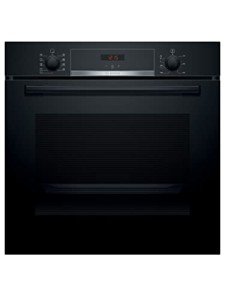Oven Built In: The Good, The Bad, And The Ugly

The Rise of Built-In Ovens: A Seamless Approach to Modern Cooking
In modern kitchens, where design visual appeals blend seamlessly with performance, one device stands apart as a real game changer: the built-in oven. As homeowners and chefs alike continue to look for innovative options that enhance their cooking experience, built-in ovens have actually ended up being increasingly popular. This post checks out the advantages, factors to consider, and trends surrounding built-in ovens, highlighting why they are a vital function in modern-day cooking spaces.
What is a Built-In Oven?
A built-in oven is a cooking area home appliance designed to be integrated into the kitchen cabinetry of a kitchen area rather than standing alone. Unlike traditional freestanding ovens, which can be moved and positioned anywhere, built-in ovens come in numerous styles and sizes to fit specifically within designated areas. Readily available in single or double configurations, these ovens use a structured look that matches contemporary cooking area styles.
Ovens & Hobs of Built-In Ovens
1. Space-Saving Design
One of the most attractive benefits of built-in ovens is their space-saving design. By incorporating the oven into cabinetry, you can release up important counter and floor area. This is especially helpful in smaller kitchens, where maximizing room is necessary. Built-in ovens can be installed at eye level, making them more accessible and decreasing the need to flex down.
2. Visual Appeal
Built-in ovens contribute to a smooth and cohesive kitchen area design. Offered in different finishes-- such as stainless-steel, black, white, and custom-made cabinetry-- they can mix perfectly into the total decor. This visual appeal enhances the kitchen area's visual harmony and elevates the area, creating a modern and sophisticated atmosphere.
3. Enhanced Functionality
Numerous built-in ovens come equipped with advanced cooking innovations, such as convection cooking, steam ovens, and wise features. These enhancements enable flexible cooking choices, making it much easier to attain professional-level outcomes at home. Smart built-in ovens can even connect to Wi-Fi, allowing users to manage the oven from another location, receive notices, and gain access to a variety of cooking programs and recipes.
4. Enhanced Ventilation
Because built-in ovens can be integrated with kitchen hoods and ventilation systems, they can assist keep better air quality and reduce cooking odors. This is especially considerable for those who love to prepare with aromatic spices and ingredients, as a reliable ventilation system can keep the kitchen area comfortable and welcoming.
5. Personalization Options
Built-in ovens provide a large range of customization options to match private cooking styles and needs. From professional-grade devices with numerous cooking modes to compact designs for smaller sized cooking areas, homeowners can pick the oven that fits their particular requirements. Many producers likewise use adjustable front panels, allowing you to match the oven's appearance to your cabinetry for a truly merged look.
Factors to consider When Choosing a Built-In Oven
While built-in ovens have many benefits, there are necessary factors to consider to remember before purchasing:
1. Rate
Built-in ovens typically include a greater price tag than their freestanding equivalents due to their style and setup requirements. It's crucial to consider both the expense of the oven and any additional expenditures related to kitchen cabinetry modifications or setup.
2. Installation Requirements
Installing a built-in oven often needs expert help, particularly if you require to modify existing cabinetry. Ensure that you consider any expenses related to setup, including labor and possible cabinets adjustments.
3. Size and Dimensions
Before acquiring a built-in oven, measure the designated area properly to guarantee a correct fit. Built-in ovens can be found in numerous sizes and setups, so choosing one that aligns with your needs and cooking area style is crucial.

4. Way of life and Usage
Consider your cooking routines and needs when selecting a built-in oven. If you frequently host big events, a double oven may be more beneficial. On the other hand, if you have a compact kitchen area, a single-wall oven might be sufficient.
Patterns in Built-In Ovens
The cooking area appliance market is continuously developing, and built-in ovens are not exempt from emerging trends. Some existing trends consist of:
Smart Technology Integration: With the increase of smart home innovation, built-in ovens now frequently include connection choices. This enables users to monitor cooking progress and change settings via mobile apps.
Energy Efficiency: As sustainability ends up being a concern, lots of producers are purchasing energy-efficient built-in ovens that reduce energy intake while keeping performance.
Multi-functional Designs: Built-in ovens now offer functions such as air frying, sluggish cooking, and steaming, supplying flexibility that meets a wide range of cooking approaches.
Conclusion
Built-in ovens certainly represent an ideal blend of design, function, and convenience in today's cooking areas. As more property owners go with this modern solution, the focus moves to creating a cooking space that is as aesthetically pleasing as it is useful. Whether you are constructing a new home or redesigning your kitchen area, considering a built-in oven might elevate your cooking experience and transform your cooking area into a stylish and functional sanctuary. With a selection of choices readily available and continuous innovations in innovation, built-in ovens stay a standout choice for both amateur cooks and culinary enthusiasts alike.
